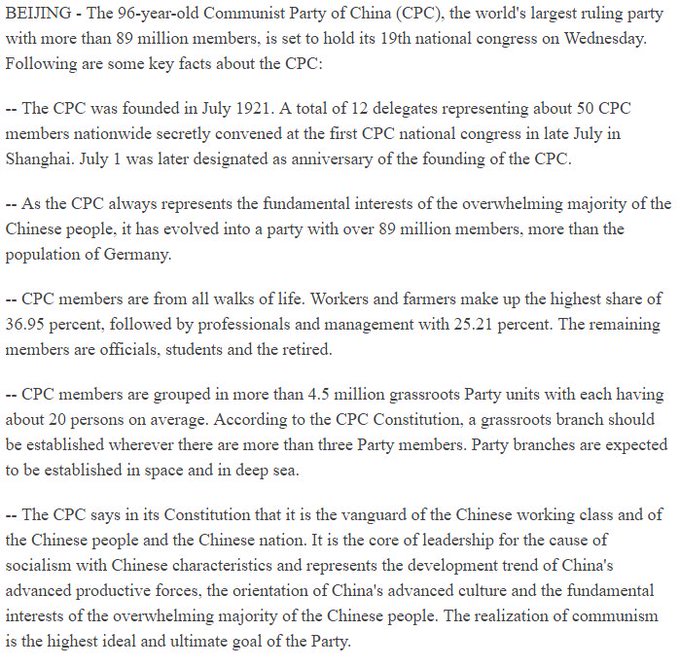(Originally posted Apr 8, 2018)
Unless otherwise noted, the following excerpts are from H. Khoo’s “The Class Nature of the Chinese State” from 2008. Most trends discussed here solidifying working class power in China have continued today.
https://chinareporting.blogspot.com/2009/11/class-nature-of-chinese-state-critique_26.html
1. The broad strokes of China’s democratic-centralist system, a pyramid structure in which actions by the lower sectors require approval from above, and actions from above require legitimization from below via electoral processes.
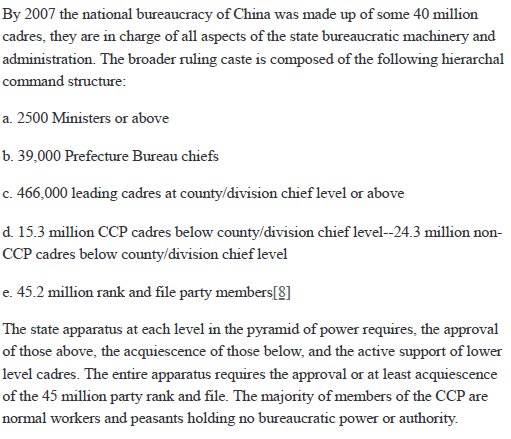
2. Evidence of the CPC’s actions to defend the socialist system against potential capitalist capture: Jiang Zemin orders the divestment of the PLA from business ventures.
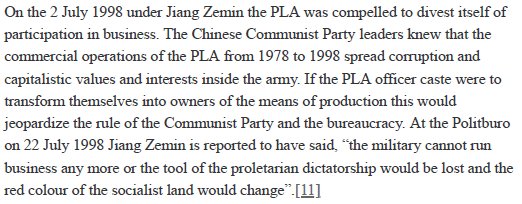
3. Evidence of the weakness of the Chinese bourgeoisie *as a class and political force* and against claims that the capitalist class has already “seized” the state.
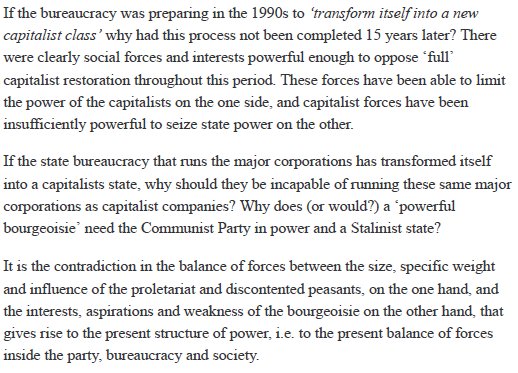
4. China’s state sector invests almost exclusively to other parts of the state sector. This includes the banking system, which almost exclusively lends to the state sector. The socialist core economy leads in China, the private sector follows.

5. Property rights in China are weak, and as will be noted, the Party and state are deeply involved in workers’ struggles and the state is systematically *biased* towards the working class in the legal superstructure (ie, the opposite of a capitalist state).

6. A theoretical note: The existence of markets and the law of value is not mutually exclusive to socialism, on the contrary, these will continue under socialism but towards very different ends.

7. An additional theoretical note re: markets and socialism. (Note, I’m not a fan of describing the Chinese state as “Stalinist” as I don’t think that’s a meaningful descriptor. The state is ML. But this author is of a different tendency, so)
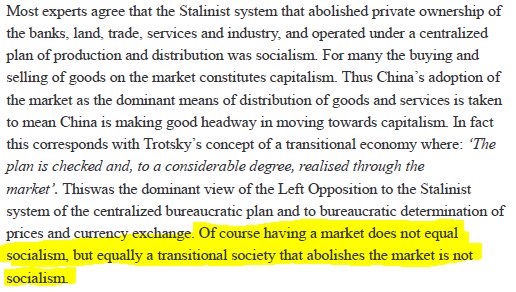
8. A third theoretical note emphasizing the need to distinguish between the appearance of things and what they really are. This is where most Western leftists *theoretically* fail to understand Chinese socialism.

9. China’s socialism is one in a state of transition, form a lower to an advanced stage, as Xi Jinping and the CPC have repeatedly stated. The goal is to reach the advanced stage of socialism by 2049. In this sense, China borrows theoretically and practically from USSR’s NEP.
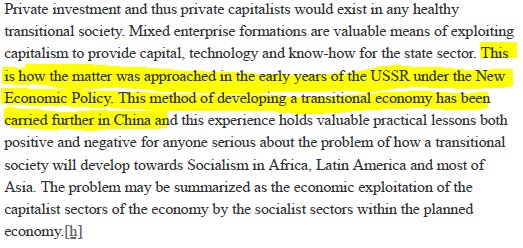
10. On welfare and benefits in the SOE economy.
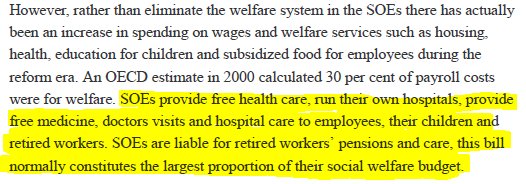
11. This is why China’s economy will never experience a “housing bubble.” Not only is mortgage lending comparatively low, there is no true private land market in China for there to even be a crisis.

12. The state owned sector controls the commanding heights of the Chinese economy and is guided by the five year plans, while state-owned finance further dictate to both the SOEs and the private sector. Thus, the core of China’s economy is in the state’s total control.

13. The private sector in China is made up almost entirely of small, low-margin enterprises, while the SOEs are large and control the most important, strategic industries.
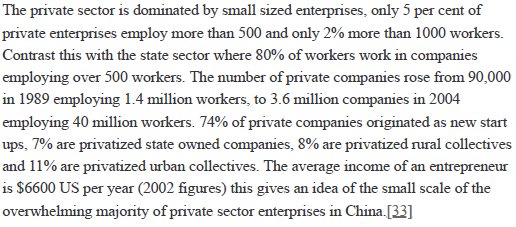
14. Again, the legal superstructure in China, is not biased towards the capitalist class. This is a requirement for any stable class, as Marxists know. In fact, I would go further and argue that the state and its legal system are biased *against* capital.

15. As evidence of this lack of bias towards capital, consider the debate over the property law. In what capitalist society is this even up for debate?

16. Regarding the demographic make-up of the Communist Party of China, here are some recent stats. Farmers, herders and fisherman make up the largest bloc.
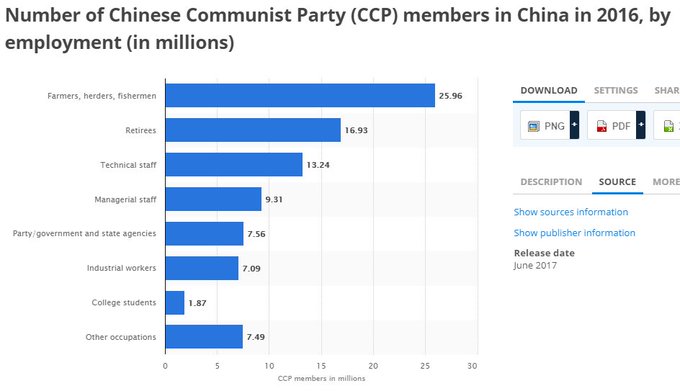
17. Chinese agriculture is dominated by the state.

18. Personal liberties in China have progressed dramatically since the 1970’s.
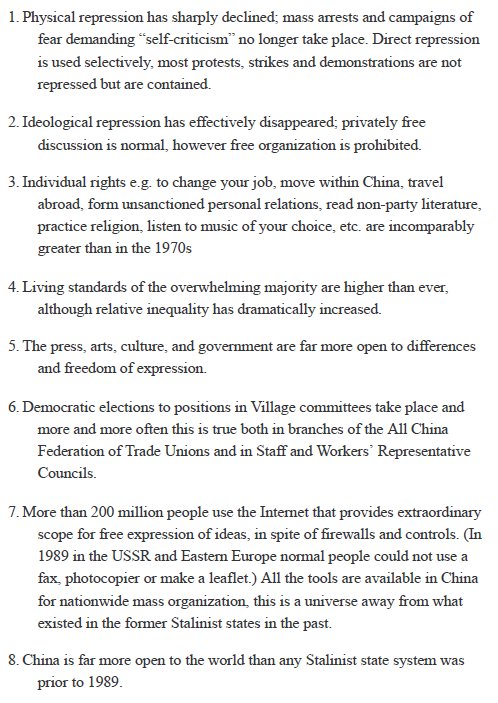
19. Evidence of the rising power of the left wing of the Communist Party of China as embodied by Hu Jintao and Wen Jiabao. I think most would agree that Xi Jinping has confirmed this analysis of a leftward shift in leadership.
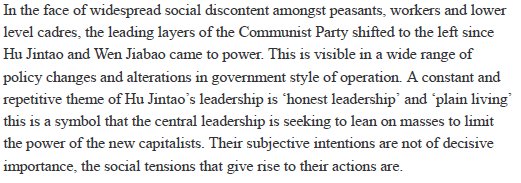
20. Further evidence of the left wing of the Communist Party of China actively pushing for and defending the socialist system under Hu Jintao.
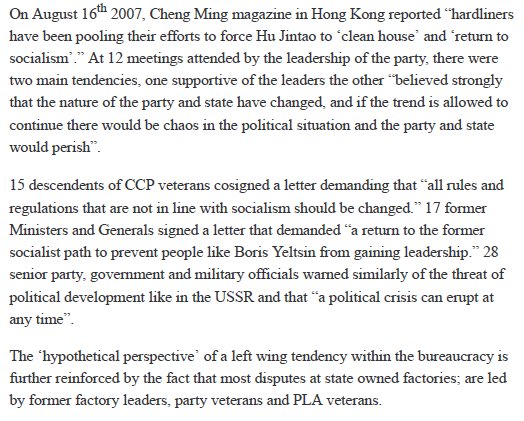
21. The capitalist class is not a stable, consolidated force in China.
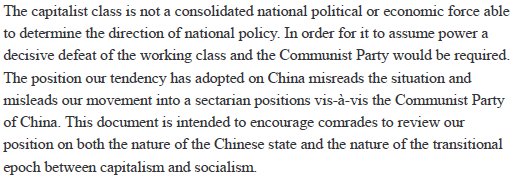
22. Finally, here are more recent statistics concerning the makeup of the Communist Party of China. From 2017:
